
Wickenburg, Arizona
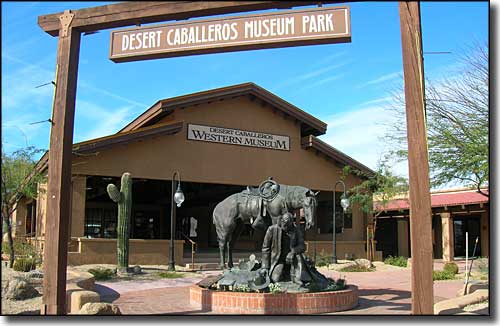
The Desert Caballeros Western Museum & Park in downtown Wickenburg
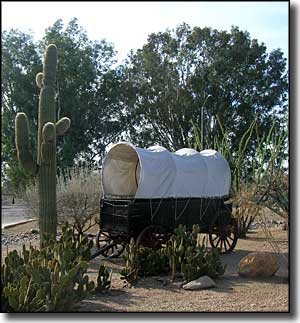
Wickenburg, named for Henry Wickenburg, an early gold miner from Austria, began life as a gold camp. It was in this area that Wickenburg staked out the Vulture Mine, a claim that has produced more than $30 million in gold. The foothills in the area around Wickenburg are still littered with old mine entrances and other relics. At the bottom of the canyon here is the Hassayampa River, a year-round water source surrounded by a fertile valley. Many early settlers were farmers who settled along the river and raised food to sell to the miners.
From 1860 to 1872, Wickenburg was in the heart of the Indian Wars in northern Arizona. That mostly stopped in this area when General George Crook finally broke the power of the Yavapai at Skull Cave in the Superstition Mountains. The Yavapai were confined to a reservation in the Rio Verde area but were so successful as land managers that two years later, the local whites pressured the federal government into removing the tribe completely to the San Carlos Apache Reservation.
The railroad arrived in Wickenburg in 1895. The train depot that was built back then now houses the Wickenburg Chamber of Commerce and Visitor Center.
It was in 1923 that the first real dude ranch was opened at the Bar FX Ranch. Over the years after that Wickenburg gained a reputation as "The Dude Ranch Capital of the World." Some of the old dude ranches are still in business but Rancho de los Caballeros is now a golf resort and Remuda Ranch has been turned into the world's largest facility for treating eating disorders.
As Wickenburg is still some distance out from the developer sprawl that characterizes so much of the Phoenix Metro Area, the town has been able to retain some of its original old west flavor, and quite a few of the original buildings.
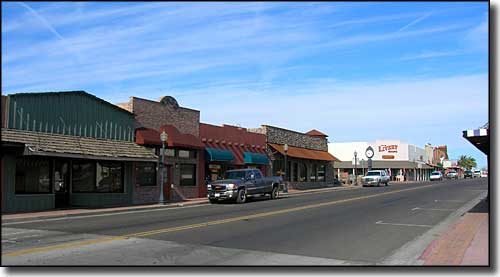
Downtown in Wickenburg
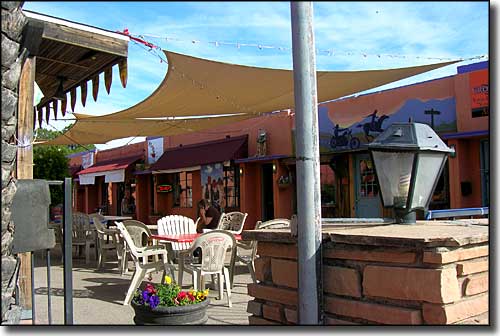
A sidewalk cafe in Wickenburg
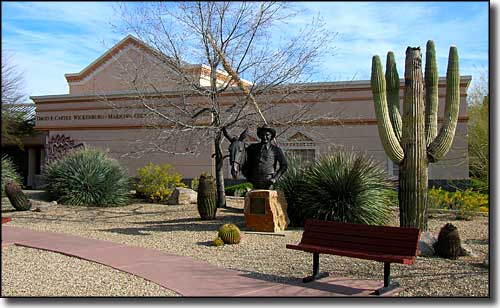
Maricopa County Offices in Wickenburg
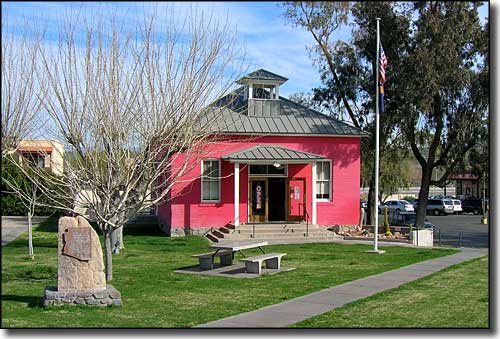
Wickenburg's original schoolhouse, now a museum
Latitude: 33.9649°N
Longitude: 112.7479°W
Incorporated: 1909
Elevation: 2,057'
Education:
High School or Higher: 80.2%
Bachelor's Degree or Higher: 19.9%
Graduate or Professional Degree: 5.7%
2011 Cost of Living Index for Wickenburg: 93.8
Estimated Median Household Income: $40,900
Estimated Median Home Value: $204,300
Median Resident Age: 48.4 Years
Major Industries:
Health Care, Construction, Lodging & Food Services, Educational Services, Professional Services, Government, Retail Services, Finance & Insurance Services, Agriculture, Personal & Laundry Services
Unemployed (March 2011): 8.5%
2010 Population Demographics
| Total Population | 6,363 |
| Males | 3,027 |
| Females | 3,336 |
| Population by Age | |
| Under 18 | 1,124 |
| 18 & over | 5,239 |
| 20-24 | 321 |
| 25-34 | 458 |
| 35-49 | 900 |
| 50-64 | 1,416 |
| 65 & over | 1,998 |
| Population by Ethnicity | |
| Hispanic or Latino | 854 |
| Non Hispanic or Latino | 5,509 |
| Population by Race | |
| White | 5,756 |
| African-American | 15 |
| Asian | 35 |
| Native American | 88 |
| Hawaiian or Pacific Islander | 2 |
| Other | 371 |
| Two or more | 96 |
